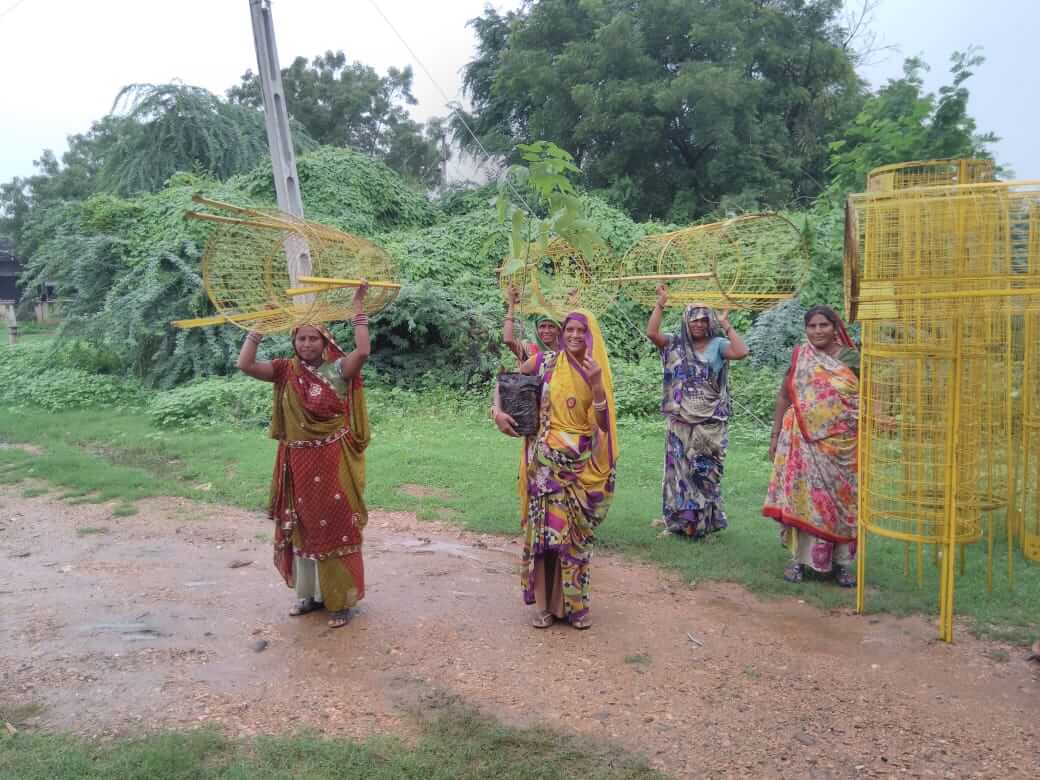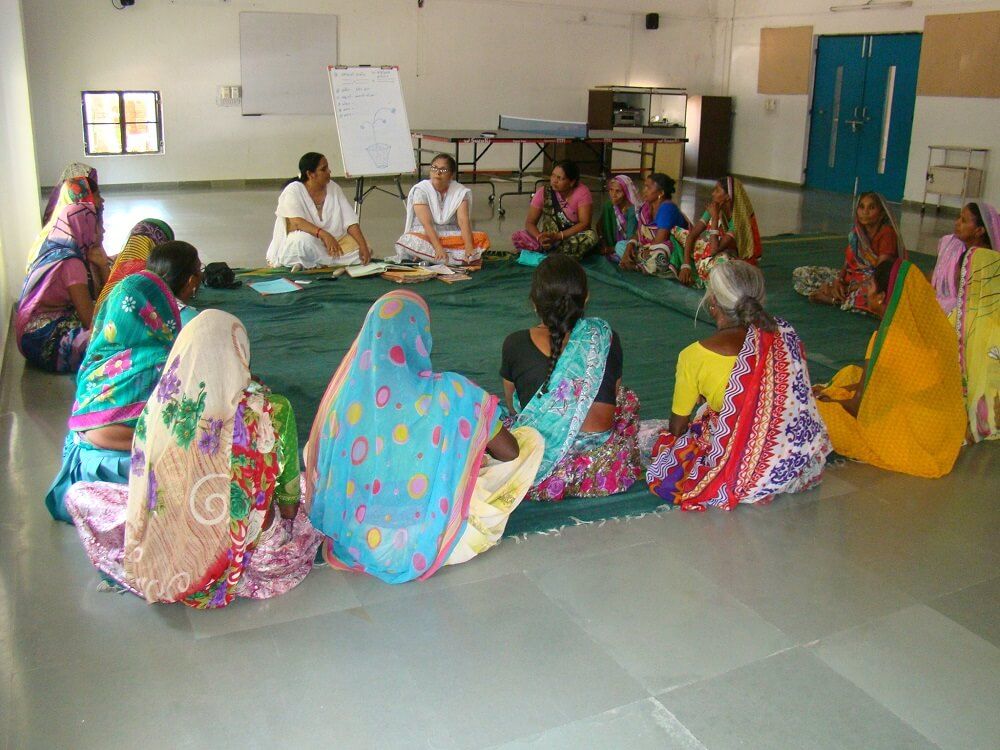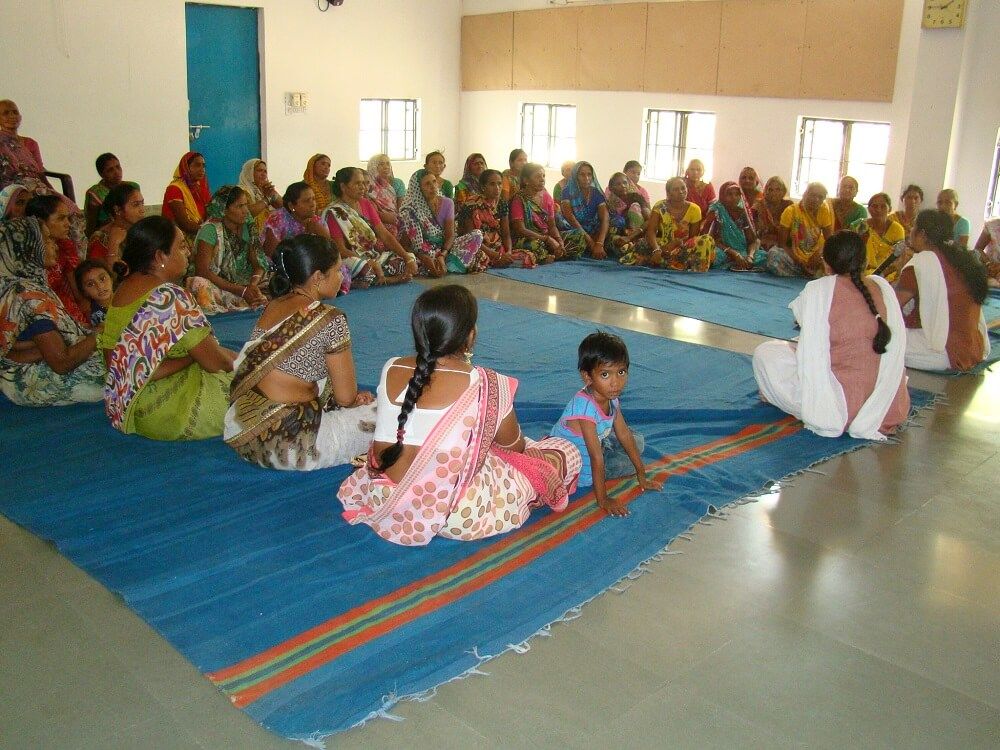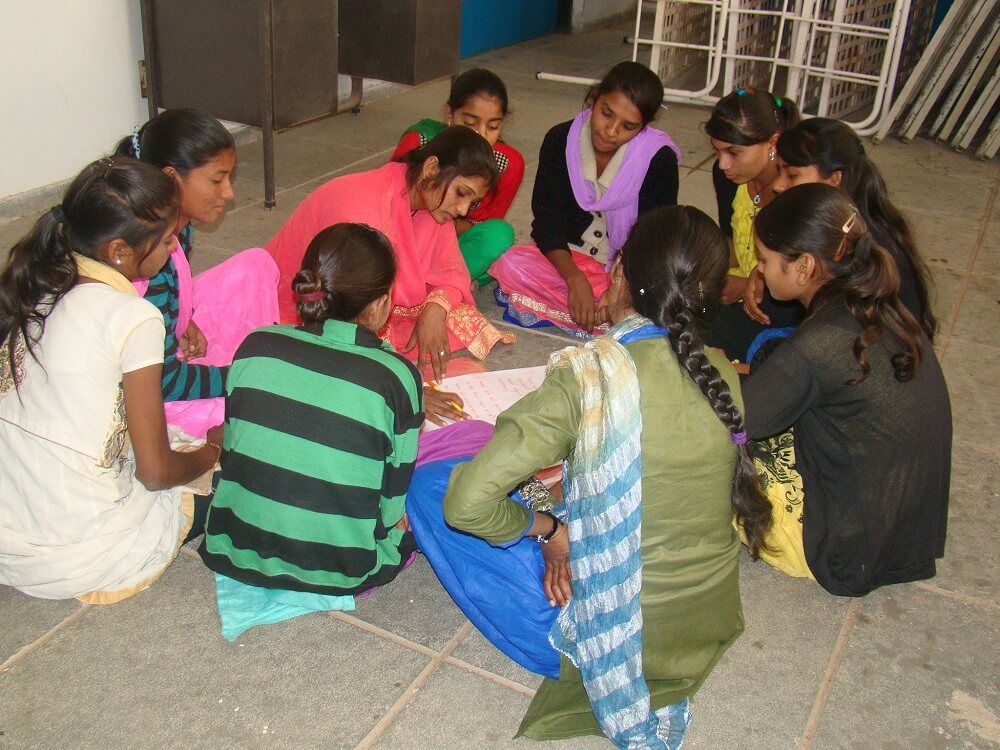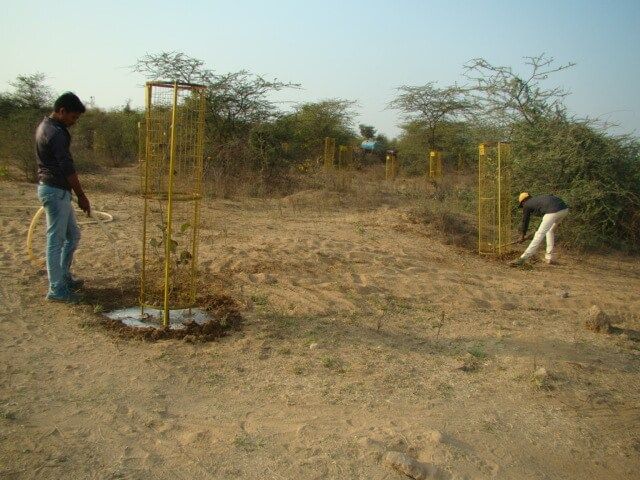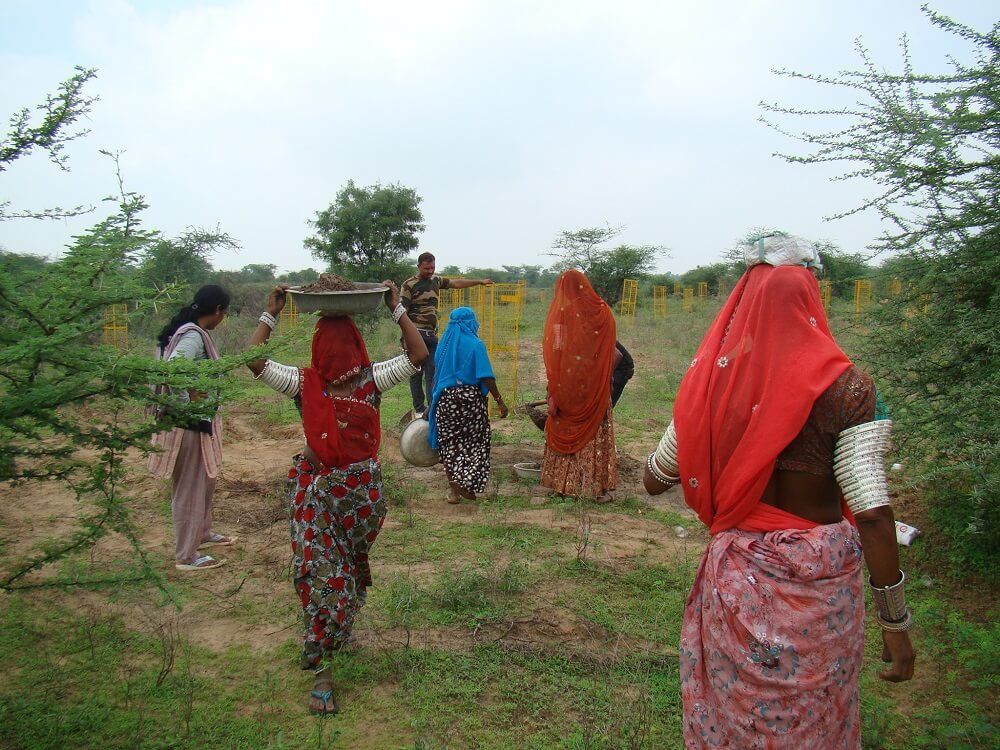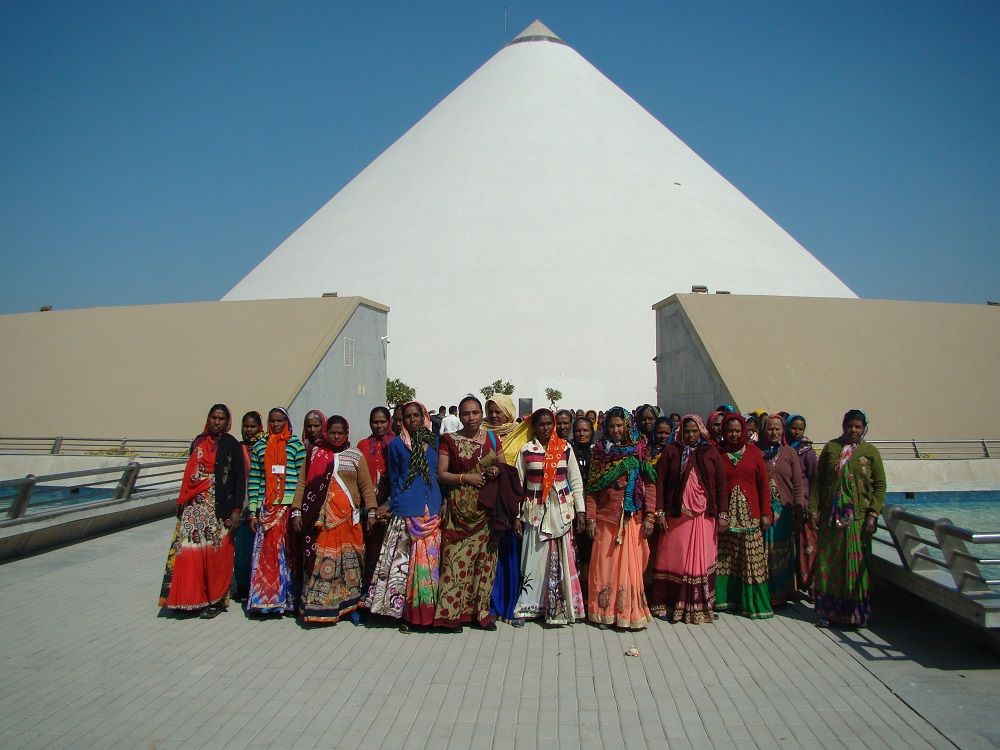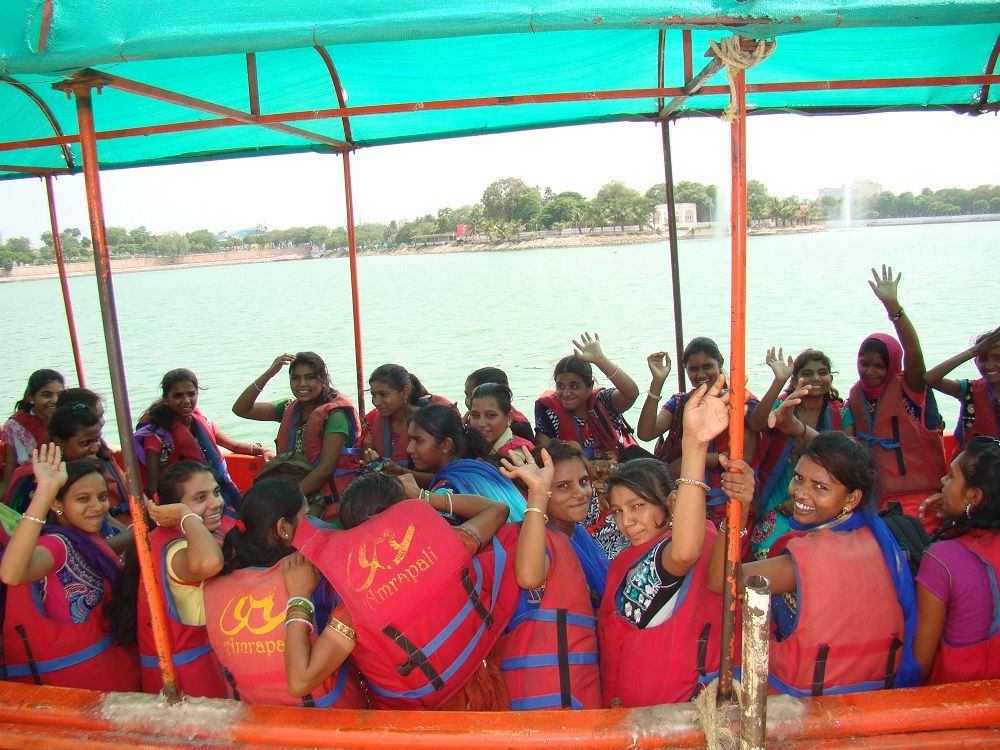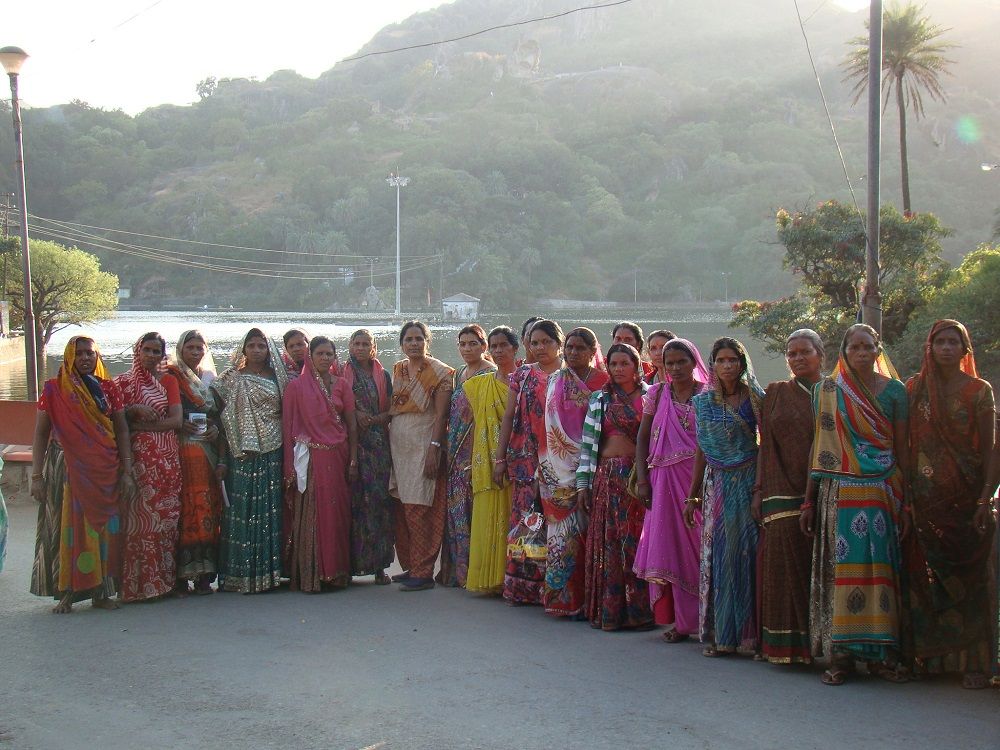COMMUNITY BASED DEVELOPMENTAL ACTION (CBDA)
Community Based Developmental Action (C.B.D.A) Program was launched in 1996 after the health care services of Anjali were established.
Salient Features: As the founders were permanently staying in the village and working full time, the hospital activities brought all the communities in contact with the founders. Through these contacts it was perceived that children & women needed attention and some activities pertaining to these groups can be initiated.
Supplementary educational program for the children of 10 interior villages was initiated in the year 1999-2001. The objective was to provide supplementary education to the children of 1st, 2nd & 3rd standards so that they are able to read & write before they completed 3rd standard. A supervisor with training abilities was employed and 10 educated youths from the respective villages were given training. Modules were developed for the selected youths to teach the students. The selected youths were provided honorarium by the organisation.
For three years the program was conducted and every year an effort was made to involve parents in small ways like buying one note book & a pencil, attending monitoring meetings to see how their child was performing, attending birthday celebration of their child etc. After three years of sustained efforts there was good improvement in performance of the children and the concept was successful but the involvement of parents and response was practically negligible.
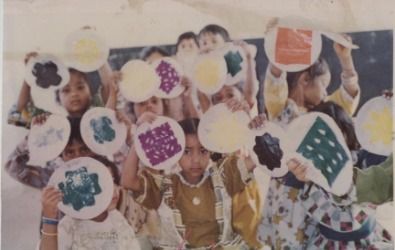

A relook was done and it was felt that any outreach activity should have full involvement of the concerned beneficiaries. Small saving groups of women was seen to be an activity in which they would involve and as their need of immediate liquidity could be answered, and they would find it an interesting activity. Their exploitation by money lender in form of high interest and losing their precious land and ornaments can also be prevented. Moreover the program had a potential for emergence of a platform on which they can be involved in many other important issues besides saving group.
The interior villages that were selected for the program as usual were absolutely male dominated and the women who showed desire to join saving groups could only save Rs 30/- per month. It was important to keep the program self-sufficient to avoid creating an impression that they will be getting things free of charge or as a gift from donors. For the first two years only saving was done, no landing was considered and other activities like leader's training, accounts training, frequent meetings at their village and at Anjali, signature training etc were the main activities to keep them interested.
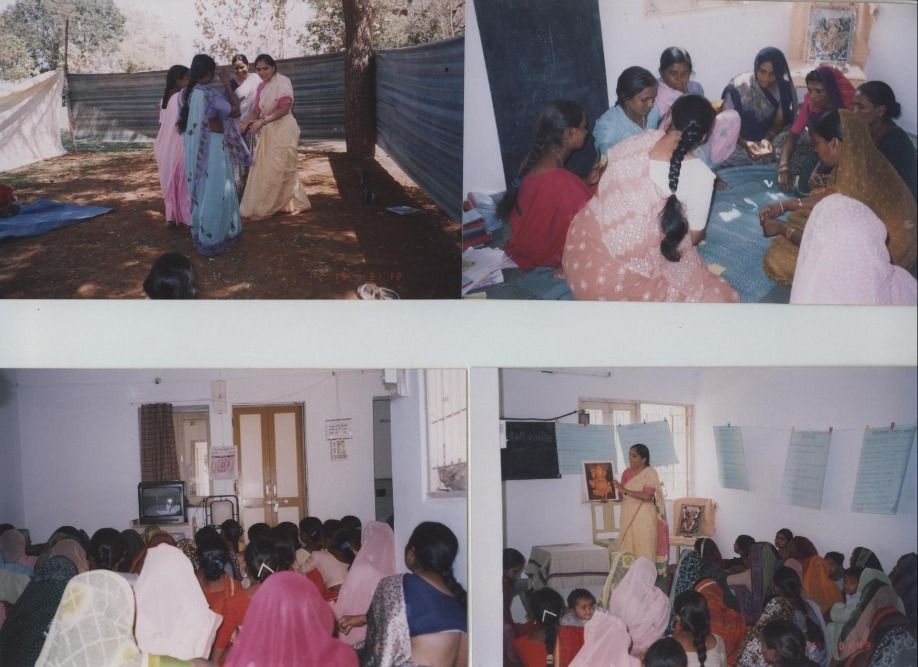
Initial Training
Another important factor was empowerment. The organisation functioned as a facilitator / catalyst. After formation of saving groups most important factor was monthly meeting. Anjali made it compulsory for the field staff to be the facilitator of the meeting. The monthly meeting was an opportunity to make them (a) tolerant to each other as each group comprised of 10-12 members living in the same falia / street (b) familiarise them with group discussions (c) choosing the member most in need of money and keep away from personal prejudices (d) familiarise them with writing resolutions (e) familiarise them to basic accounts and calculation of interest which was by their consent kept at 4% per annum for loans. (f) Acquaint them to banking with nationalised banks, talk to the manager, opening accounts, and depositing cash, withdraw cash and understand passbook entries (g) as many of these procedures would require writing skills to conduct literacy program so that they can sign and perform basic writing.
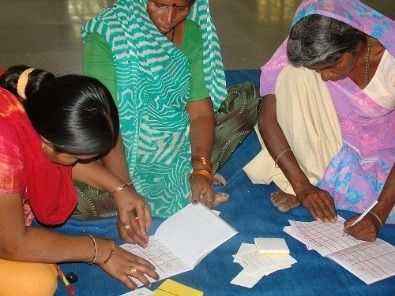
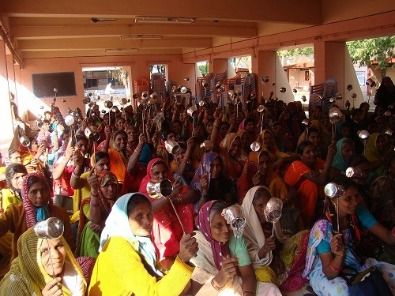
Today the program covers 48 villages and there are 128 saving groups with 1622 members. The total savings are Rs 15000000.00 and loans worth Rs 45000000.00 have been taken by 5761 members in rotation. (Each member on average has taken loan about 3.6 times). The interest on loan is kept at 4% per annum (except for 2-3 groups which take more interest). Currently each member saves Rs. 100 per month. It has become a live platform to interact and inform them about developments & needs as well as expose them to outside world.
The platform thus created is used extensively to bring visible change among the members, their children, families and in turn in the villages. Some of the programs undertaken on this platform of saving groups are:
a. Newly married couple's meetings: Every year at least two meetings of newly married couples of these villages and especially newly married couples of saving group member's families are held. Both husband and wife are the invitees. Along with various issues pertaining to recently married, they are also involved in playing some innovative games to enhance their understanding about married life and are served lunch so as to add warmth with to the program.
b. Agricultural Training: Awareness, understanding, demonstration and implementation of earth worm manure was undertaken with the help of Gram Bharati, Amrapur. Seeds for the upgraded variety of grass were given to about 600 members and seeds for growing vegetables are also provided to nurture concept of kitchen garden.
c. Proper use of loan facility: In order that they do not take loans for wasteful expenditure during the monthly meetings frequent discussions are routine to impress them that expenditures on social events are curtailed and asset building, income generating, agricultural and educational activities should be the main reasons for taking loans.
d. Various Training: Leadership, Accounts, writing, sign, drama, role play. Once a year the monthly meetings are held at Anjali. During these meetings and at special occasions the selected members of each saving groups are given training in leadership, maintaining accounts of the group, writing and signing. Role plays & dramas are prominent features to convey new ideas and bring awareness.
e. Action Programs: Demonstrations against tobacco, alcohol, female foeticide.
Practically all the groups have participated in anti-tobacco demonstration on anti-tobacco day. Three of the villages had active anti-alcohol drive to the extent that the women members of one group went to the district collector to represent demanding action for stopping alcohol production in their village. Demonstration to stop female feticide were also held. This way they & their family members also become aware about the themes of the demonstrations.
f. Sanitation & Personal Hygienic Points: related to these two subjects are frequent themes of role plays, play lets, songs and meetings. NASADO Program: This program was under taken in all the villages where there are saving groups. NASADO is acronym for Nakh (nails), Saboo (Soap) & Doyo (small utensil with long handle to take out water from water pot). The acronym means to drive away. It was used to explain how to drive away common illnesses like diarrheas, vomiting, Jaundice, Typhoid, worm infestation and other common illnesses. It is very important preventive health measure. As a follow up of the program all the members were motivated to purchase nail cutters, a cloth for filtering water & a doya. The program was highly successful as well as popular.
g. Soak pit & Latrine Construction Program: The importance of having a latrine and soak pit in the house was explained as well as demonstrated. Soak pit construction was given material assistance. There was a encouraging response and many members constructed soak pits and latrines in their houses. In coordination with Jan Swasthya Abhiyan training & mentoring of VH &SNC (village health & Sanitation & Nutrition committee) was under taken in 51 villages out of which all the villages of the women's program were included.
h. Tree Plantation: Tree plantation The women's program completed 10 years recently. To mark the event all the members were motivated to plant at least one tree in their back yard as a result about 1500 trees were planted. They are taking care of the trees and the field workers are monitoring the growth of the trees.
i. Exposure Tours & Picnics: After several years of interactions with the members of the saving groups and various informal discussions & chit chats it was realized that these women hardly went out on their own. Mostly they went out escorted in marriages or on occasion of deaths of nearby. In the beginning picnics of few hours were organized to nearby places around their villages. Later there was demand to go out on tours. For two years subsidized tours were organized and practically all the groups participated. All the preparation for the tour was made with their involvement. Later on, the yearly tours are a regular feature of the women's program. They decide where to go, book the buses, make preparations, collect money from members and make payments. One field worker accompanies them. Last year 1040 women members of 46 villages and 111 saving groups went out for tours in 19 buses in 9 trips. It is a significant sense of self-esteem when their husbands do not get such opportunities and they plan & go out in 2x2 luxury buses with their own money.
j. Conventions: To instill a sense of solidarity among the members a convention of all the members is organised over a period of 3-4 years. During this event they perform on stage in front of about 1200 audience. The performances are songs, garba, dramas, and plays. Most of the performances are related to awareness generation and social issues.
Adolescent girls Programm ( Kishori Programm): Aware and well informed girls are going to make the future citizens healthy, and educated. Anjali has been working with Kishori since long. To start with it was adolescent girls( Kishori) of the members of saving groups and their newly married couples in their respective villages. Now it is in villages but the girls of the schools are involved in their very school. Body physiology ( especially menstruation and pregnancy), Nutrition, Hygiene, interpersonal relations, education, self defence are some of the topics under taken.
Environmental Enrichment Activity:
- Objectives -- Environmental degradation and depletion of natural resources without concern for enriching the same is a universal problem but the problem is serious in developing countries as corrective measures are practically missing. Though there are many government programs providing significant assistance, there are very few villages which undertake such programs. This program is outcome of inclination of founders, involved team members to wards environment enrichment and push given by enlightened donors & well-wishers. Another important objective was to set an examples, express the need and motivate the villagers to undertake such programs.
- Developing water bodies: Deepening, restructuring and developing existing lakes which were heavily silted and have potential to develop About five lakes have been developed in above way and work on one of them has been extensive. In addition to bringing up water levels in wells in the surrounding areas & providing round the year water for birds & animals it has a demonstration value which individual villages can adopt as considerable assistance is available from Government schemes for such activity.
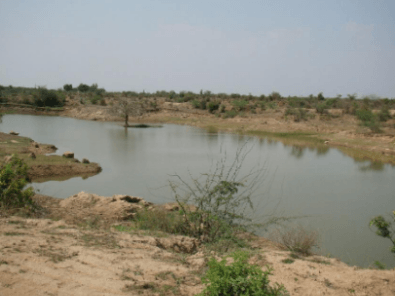
Rayan Lake
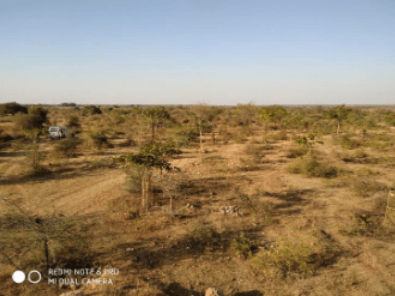
Tree Plantation Activity
- Tree Plantation: Tree Plantation was started with involvement of staff members of the organisation and about 250 trees were planted with tree guards on road side. With regular watering for 3 year the trees have grown and is serving as demonstration to all and many panchayats. The outcome of this small program was plantation, over a period of 8-10 years, of 4500 trees with tree guards on 70 acres of land surrounding the lake that was extensively developed as mentioned above. After some years it is going to transform the whole area when these trees grow up. The terrain being rocky and without any natural water supply trees need regular watering and care. For which Anjali has put two water tanks. In such manner, the planted trees are taken care of throughout the year. More than 90% of trees are surviving and growing up. This program has not only enriched nature but has also stopped illegal encroachment of the Panchayat land.
